Portable hydrogen peroxide detector is a high-accuracy portable gas detector. The H2O2 gas detector comes with a back clip and silicone case, suitable for different kinds of situations. Easy to operate, comprehensive functions, can measure sulfur dioxide gas, measure range from 0 to 100/200/500/1000 ppm.
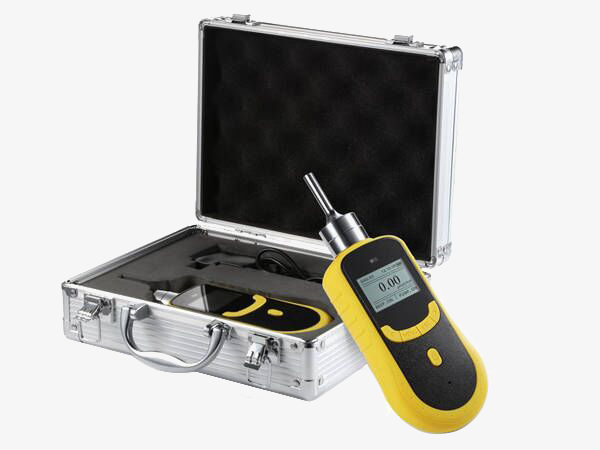
Gas detectors can detect hydrogen peroxide (H2O2) quickly
- sisco portable hydrogen peroxide (H2O2) gas detector has an LCD dot matrix display to directly read out the gas type, unit, concentration, local time, etc.
- English/Chinese operations are supported.
- Gas concentration unit PPM and mg/m3 can be shifted quickly.
- Built-in micro-sampling pump, 10 grades of suction are available.
Explosion-proof certification.
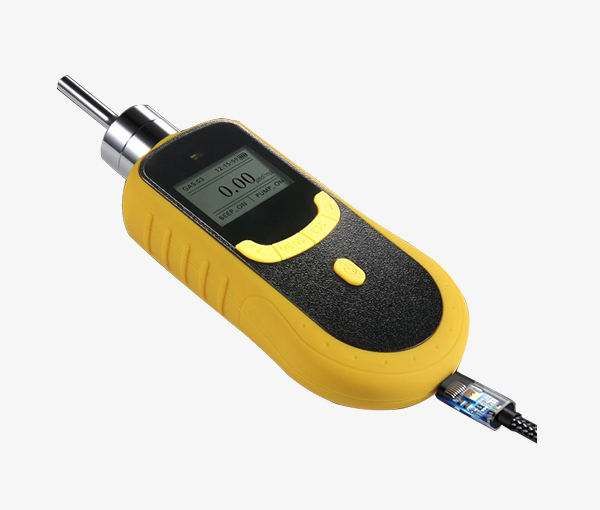
USB interface to transfer data at high speed
- The handheld hydrogen peroxide detector can download and print the stored data (optional).
- There is no need for personnel to manually record data in real-time, and the data is automatically stored in the instrument.
- Historical data can be viewed on the instrument or downloaded to a computer.
- USB interface, fast and convenient charging.
Details
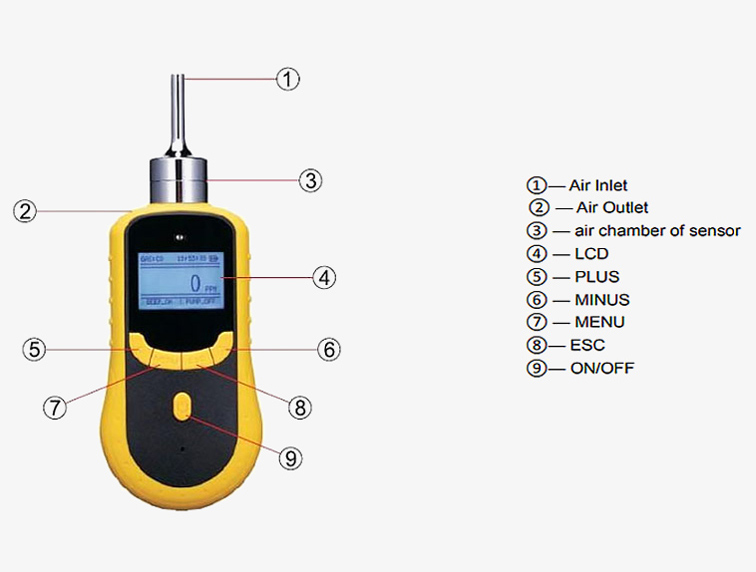
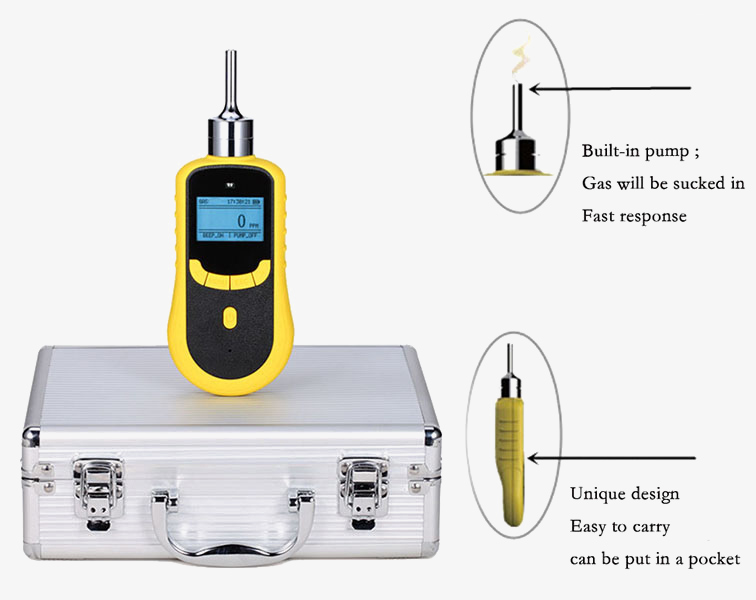
Applications
sisco hydrogen peroxide (H2O2) detector is suitable for monitoring the concentration of hydrogen peroxide in harsh environmental gases such as high temperature, high humidity and high dust. It has strong anti-interference and is widely used in food, packaging, warehouses, workshops, materials and security inspections.
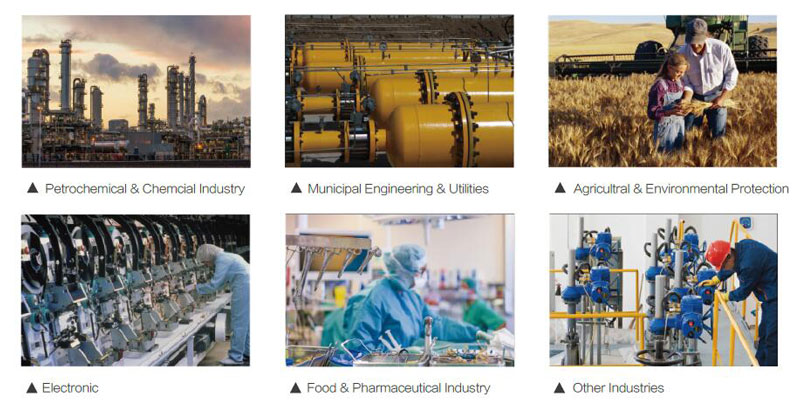
| Model | GD200-H2O2 |
| Sampling Method | With an internal sampling pump, the flow rate is up to 1L/min |
| Gas | Hydrogen Peroxide H2O2 |
| Range (Optional) * | 0-100ppm, 0-200ppm, 0-500ppm, 0-1000ppm |
| Resolution | 0.01ppm, 0.1ppm, 1ppm (resolution can be customized) |
| Precision | ≤±2%F.S. (higher precision is available) |
| Response Time | ≤10s |
| Zero Shift | ≤±1% (F.S./year) |
| Data Logging | Data logging with adjustable interval, and available for data downloading to PC through USB cable. |
| Alarms | Sound: 85dB, Light: LED, low alarm: blue, high alarm: red, Vibration: the detector will vibrate when powered on (Alarm point is settable according to customer requirement.) |
| Display | LCD dot matrix display, with a display of gas type, real time gas concentration, battery power, time, and gas unit. |
| Battery | 3.6V 2300mAh lithium polymer rechargeable battery, operating time is about 12h continuously, charging time: 4-6h |
| Explosion-proof Grade | ExibIICT4 |
| Protection Grade | IP65 |
| Operating Temperature | -20℃~50℃ |
| Operating Humidity | 0~95%RH (non-condensing) |
| Dimension | 205*75*32mm |
| Weight | 300g |
| Approval | CE, ATEX |
Note:
* If you need an H2O2 gas detector with other measuring ranges unlisted in the above table, please inform us of your operating environment to help you choose an appropriate one for your application.
* Other portable gas detectors are also provided, you can refer to SISCO Gas Detector Catalog to get the specific gas type and measurement range. If you have any questions, please feel free to contact us.
Packing List:
- 1 × H2O2 Gas Detector
- 1 × Carrying Case
- 1 × AC Adapter
- 1 × User Manual
Gas Detector Catalog & User Manual
 SISCO Gas Detector Catalogue
SISCO Gas Detector Catalogue SISCO GD200 Portable Gas Detector User Manual
SISCO GD200 Portable Gas Detector User Manual SISCO GD300 Online Fixed Gas Detector User Manual
SISCO GD300 Online Fixed Gas Detector User Manual SISCO GD400 Explosion Proof Portable Gas Detector User Manual
SISCO GD400 Explosion Proof Portable Gas Detector User Manual SISCO GD500 Handheld Multi Gas Detector User Manual
SISCO GD500 Handheld Multi Gas Detector User Manual SISCO GD600 Multi Gas Analyzers User Manual
SISCO GD600 Multi Gas Analyzers User Manual SISCO Gas Detector Communication Protocol V1.0
SISCO Gas Detector Communication Protocol V1.0 SISCO Single Stage Pressure Regulator User Manual
SISCO Single Stage Pressure Regulator User Manual SISCO Gas Detector Data Downloading Operation Instruction
SISCO Gas Detector Data Downloading Operation Instruction
Gas Detector Software
Q1: What is a gas detector?
A1: A gas detector is an instrument for gas leakage concentration detection, including a portable gas detector, handheld gas detector, fixed gas detector, online gas detector, etc.
Q2: What does a gas detector detect?
A2: Combustible gases: Natural gas (methane), liquefied gas, coal gas (hydrogen), acetylene, pentane, alkynes, acetone, toluene, alcohols, hydrocarbons, light oil, etc.
Toxic gases: Carbon monoxide, hydrogen sulfide, ammonia, chlorine, oxygen, phosphine, sulfur dioxide, hydrogen chloride, chlorine dioxide and other toxic and harmful gases.
Q3: What is ppm of gas detector?
A3: Parts per million or "ppm" is often used as a fractional measure of concentration. For example, a methane (molecular) concentration of 2% means that 2 out of every 100 air molecules are methane. Likewise, a methane concentration of 2 ppm means that 2 out of every 1 million air molecules are methane.
Tips: How does a hydrogen peroxide detector work?
The portable hydrogen peroxide(H2O2) gas detector is based on the electrochemical principle. It is a gas sensor based on the detection electrode of the oxidation reaction, the counter electrode of the reduction reaction at the same time, and the reference electrode used to monitor and balance the continuous voltage. The hydrogen peroxide sensor relies on the oxidation reaction between the electrolyte and the detected gas. The higher the concentration of the detected gas, the stronger the response and the greater the signal. The level of gas concentration is measured by the magnitude of the semaphore.
Thank you for buying industrial test and measurement equipment on SISCO.com, all products sold by SISCO and the partner cover a 12 months warranty, effective from the date of receiving the products.
What is covered?
SISCO is responsible for providing free spare parts, and free technical support to assist the customer to repair the defective products until the problem is solved.
What is not covered?
- Product purchased from anyone other than a SISCO store or a SISCO authorized reseller.
- Expendable parts.
- Routine cleaning or normal cosmetic and mechanical wear.
- Damage from misuse, abuse or neglect.
- Damage from use of parts other than SISCO approved.
- Damage from use outside the product’s usage or storage parameters.
- Damage from use of parts not sold by SISCO.
- Damage from modification or incorporation into other products.
- Damage from repair or replacement of warranted parts by a service provider other than a SISCO authorized service provider.
- Damage caused by the application environment not meeting the product usage requirements and the failure to perform preventive maintenance.

